Discover what to steal from the pros to improve your swing, strategy, and overall performance on the course.
Of all the things the best golfers in the world do well, which moves should average players try to add to their games? I know what you’re thinking: There’s no way I can move like that. To some extent, I agree with you. I’ve been coaching on tour for 20 years, and players have never been more fit or had more immediate, accurate feedback on how they’re swinging. Most of them have been doing golf-specific exercises since college, and they track their technique every day, so they’re able to do things we can only dream of. However, not every tour-pro move is off limits – you might be surprised that there’s lots you can steal. You just need to know what to focus on. The good news is, you don’t have to be perfect. The better you do these things, the more they’ll help. It’s not all or nothing. By adding these pro moves, you will mimic the best players where it matters the most and lower your scores.
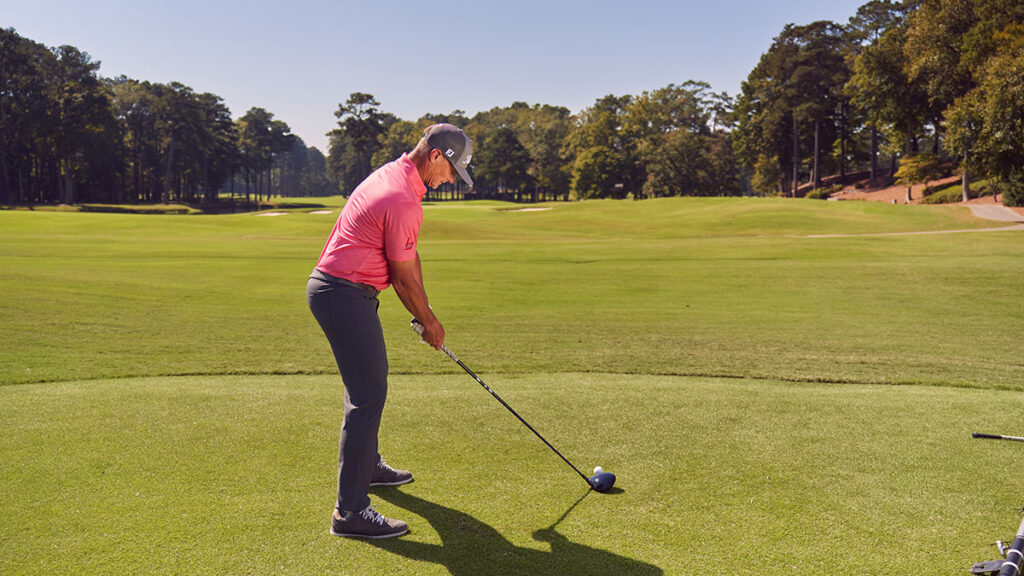
Keep Your Trail Arm Soft
he setup is critical to allowing the club and body to move properly in the backswing. On tour, nearly every player starts with a soft trail arm. The right elbow for right-handers is slightly bent at address and when viewed from behind, looking down the target line, it sits below the left arm [above]. This serves two crucial functions. First, it squares up your shoulders. Many average golfers who fight a slice tend to get their shoulders open in the setup. This often happens when the right arm is too internally rotated because it’s rigid, which shoves the shoulders open. With open shoulders, you’ll tend to take the club back too far outside, which leads to that dreaded out-to-in path coming down and a slice.
A softer trail arm also promotes an on-plane backswing, where the club moves on the plane established by the shaft to the ground at address. The trail arm controls the structure of the backswing, and by keeping it bent slightly at address, it’s easier to fold it going back. The clubface will naturally open a little as you bend the right arm, which will put you in a perfect backswing position every time.
To determine if your trail arm needs softening, take a picture of your setup from down the line. From this angle, you should see the trail arm sitting below the lead arm. Feeling like your trail elbow is pointing more towards the centre of your body will help get you into the proper setup position. If your arm is straight or your elbow is facing the camera, you know you need to loosen it up.

Move the Clubhead First
Instructors have long preached the importance of a one-piece takeaway, where the club, hands, arms and shoulders start back together. That’s bad advice – the clubhead should start first. Some players might feel like they have a one-piece move off the ball, but feel and real aren’t always the same thing. Taking everything back together gets the club too far to the inside and starts a chain of events that produces a slice.
When we look at the swings of the best players with 3-D technology, we see that the clubhead moves away from the ball first, followed by the arms, then the shoulders, then the torso and finally the hips. This is the proper kinematic sequence, which keeps the club tracking on a good path, so you can simply reverse the order coming down and deliver the club efficiently to the ball.
To nail this move, focus on giving the clubhead a head start [above]. This might feel like an earlier wrist set, as opposed to moving everything together. A good thought is small to big. The smaller muscles of the hands, wrists and arms move before the larger ones of the shoulders, torso and hips.

Warm Up Dynamically: Gone is the day when a static, club-over-your-head stretch is enough to get warm. Before pros get to the range, they go through dynamic warm-ups that prep for the movements they need in the swing. My favourite is a lunge with a twist. Step forward into a lunge position and rotate your upper body towards your lead leg [above]. Go back to your starting position and repeat this five times on each leg. You’re training to disassociate movement of your lower half from your upper half, just like in the golf swing.
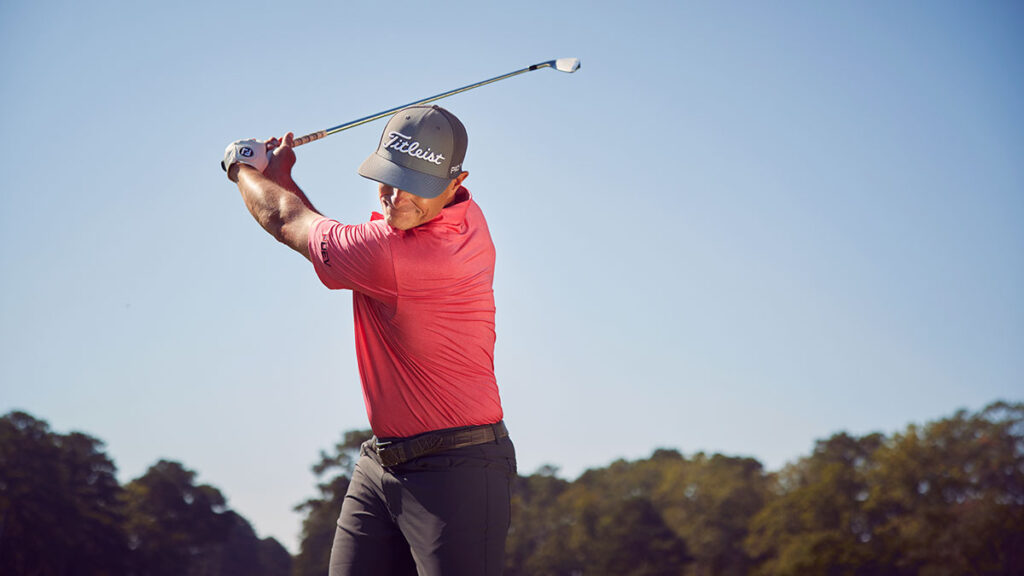
Turn Your Ribcage
Now let’s get you making a bigger turn for power – something the best players do so well by turning their ribcage to the top. The torso, or centre of the chest, is the engine that drives the second half of the backswing, with the whole upper body moving away from the target [above].
You hear a lot about “making a full turn” on the backswing, but many average golfers cheat by focusing on their shoulder movement instead of rotating their entire trunk. When you cheat, your shoulders appear to make a full turn, but if you look at the centre of your chest at the top of the swing, it hasn’t moved much. It’s a fake turn, and you’ll struggle to produce much power if that’s all you do.
Some golfers get too active with their hips in the backswing. The hips should turn going back, but that’s the result of the ribcage moving, which pulls the hips along for the ride. If you over-rotate your hips, you’ll get the club too far around and behind your body, requiring you to re-route the club on the downswing to get it back to the ball.
To correctly rotate going back, focus on your shirt buttons. Try to turn them away from the target. Imagine you’re on TV and the camera is filming your swing from behind. Show the lens your shirt buttons by coiling and turning your ribcage to the top. Your hips and shoulders will automatically move with it.
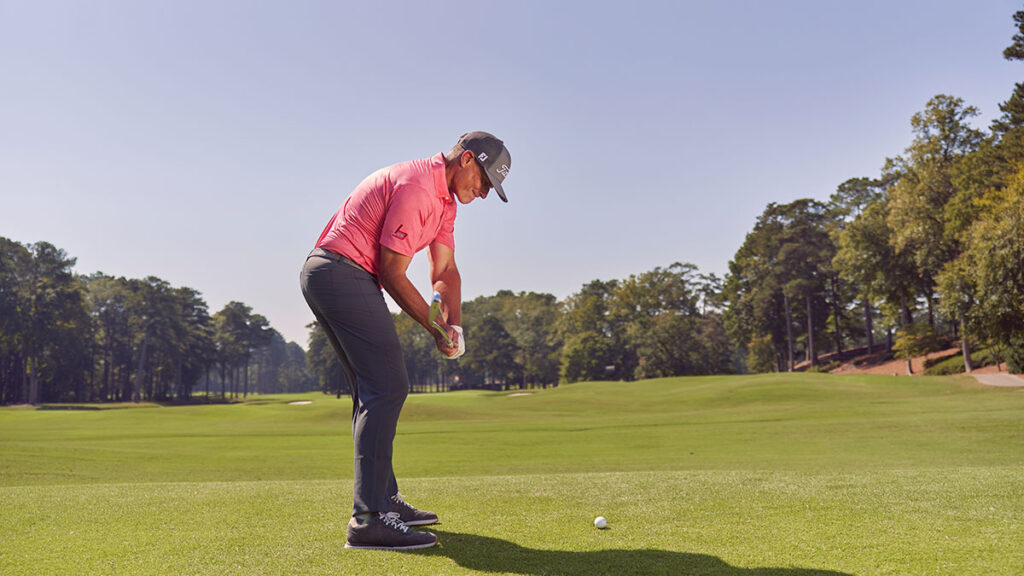
Push Your Butt Back
From the top of the swing, the best players create space to swing the club down to the ball. Watch the first downswing move from elite ball-strikers – their butt stays back and their chest is down. It’s the opposite of early extension, where the pelvis moves towards the ball and the chest rises, a fault that plagues so many amateurs and causes all kinds of contact issues and inconsistency.
Creating space in the downswing is crucial to hitting it flush, especially with irons and wedges. It keeps the clubface square and allows the shaft to return to a similar position that it was in at address. People who early extend and move their hips towards the ball are jammed and have no room to rotate through the shot, leading to erratic contact and usually a slice.
To prevent early extension and keep your chest down, stand slightly closer to the ball. Check out Tiger Woods or Jon Rahm at address – they look like they’re right over the ball. When you set up like that, you’re incentivising your body to push your butt back and create space. If you stand too far from the ball, the instinct is to move towards it, which causes the cascade of issues I just listed.
The key from the top of the swing is to push your lead foot towards the ball. Drive the toes of your lead foot into the tip of your shoe. The foot won’t actually move, but since force creates motion, that friction will push your butt back. Your chest will move down, and you’ll create a clear path to swing into the ball [above].
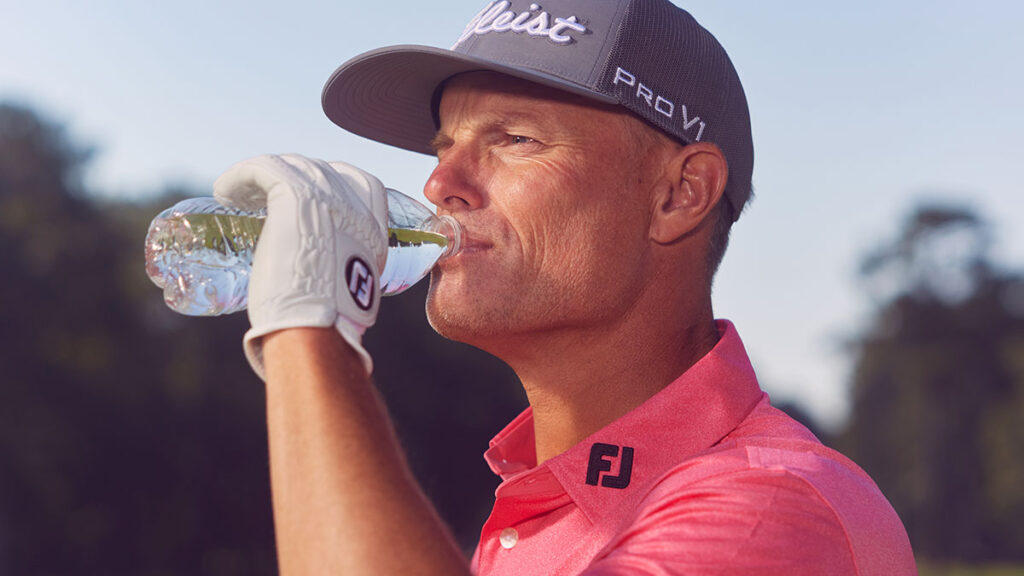
Drink and Eat Up: Pros are constantly eating and drinking during a round. Dehydration and blood-sugar
fluctuation creates cognitive and physical lapses, leading to dumb mistakes and poor swings. I advise my players to drink 16 ounces (475ml) of water or an electrolyte drink every three holes. For you, the key is just to drink more, two or three times per nine. Be sure to eat every few holes as well. Healthy fats, like nuts, and complex carbs, like bananas, are great options to maintain consistent energy.
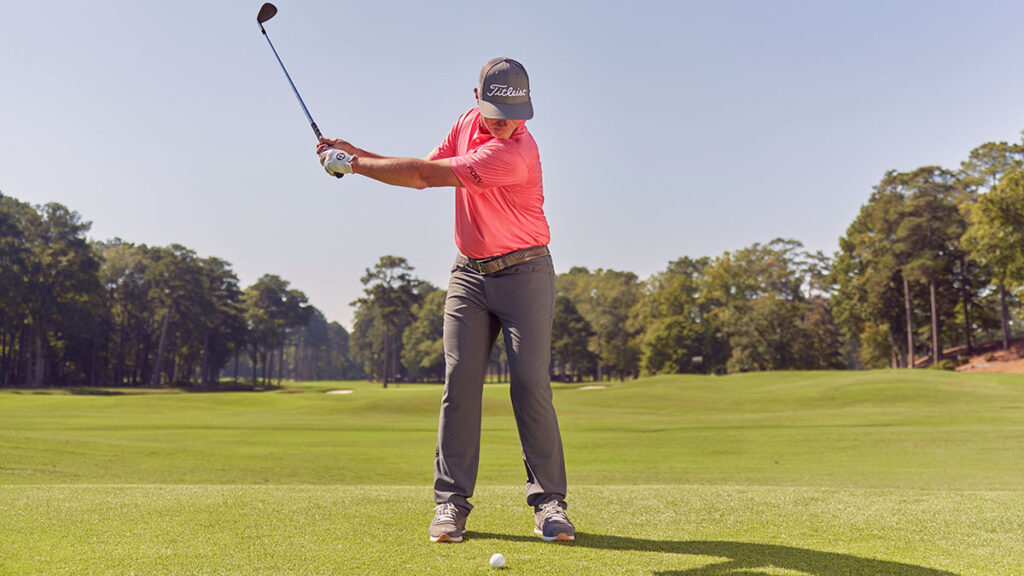
Swing Wide on Wedge Shots
Tour pros are exceptional wedge players because they control their distance so well, but you don’t need to spend hours on the range to be pin-high more often – you just might need to adjust your technique.
The best wedge players have a wide backswing with very minimal wrist set [above]. Think of Steve Stricker’s motion, where he hardly hinges his wrists. The wedge swing should be controlled by the rotation of your core, not by your hands and arms.
A wider backswing creates a shallower angle of attack and a lower, more consistent ball flight. Bad wedge players use a lot of hand action and slide their body towards the target in the downswing, which creates a steep angle and big divots. The best wedge players stay very centred throughout the swing and use the speed of their rotation to determine how far the ball will go.
At setup, lean the handle of the club a little towards the target. By doing this, you’re pre-setting the shaft lean that you want at impact so you don’t need to hinge the club much in the backswing. This is how you deliver the same loft every time.
After making a wider move off the ball, stay centred as you rotate your chest and hips in the downswing. You can control the distance by changing the speed of your body’s rotation. Do it right, and you’ll hit low-flying wedges that grab next to the pin.
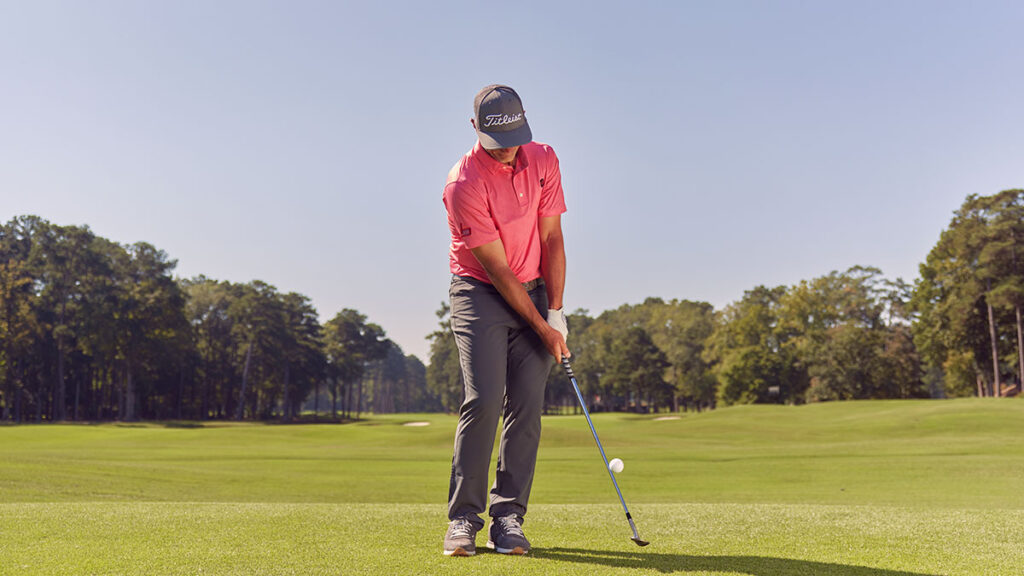
Use Your Pivot for Chips
You might think that because chip and pitch shots are short swings, you don’t need much body movement. That’s not true. There should be way more dynamic motion on these shots. The best players clip the ball off the turf and create tons of spin by moving their body towards the target in the backswing, then standing up and rotating hard in the downswing. You heard me right: on chips and pitches, you should early extend and lift your head up slightly.
This movement is called “pivot planing”, and it is something biomechanists Rob Neal and Layne Savoie, with whom I work closely, have identified using 3-D technology. The best chippers move their head down and towards the target as they swing back, and then stand up and rotate through the shot. This controls the low point, so they don’t stick the club in the ground. If you learn to pick the ball off the turf, you can chip off any lie.
To practise this move, start with your feet close together and slightly open. Raise the handle a little to prevent the heel from digging and lean the shaft towards the target. Then on the way back, shift your head down and towards the target as your weight moves to your front foot. Finally, as you swing into the ball, extend your legs, spine and head upward while rotating your chest around [above].
A word of caution: as you stand up through the shot, make sure your head isn’t falling away from the target. That’s a common tendency, and it can cause fat and thin shots. Instead, keep the centre of your chest in front of the ball as you allow your head to rise and your chest to rotate through. You’ll clip the ball perfectly and generate tons of spin every time.
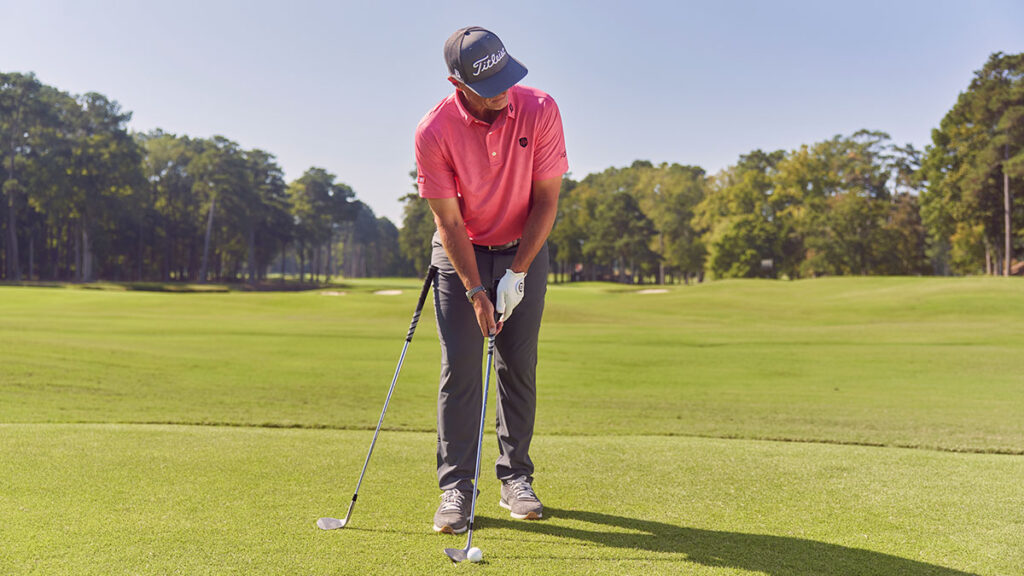
Pick the easiest Shot: The best players can pull off any shot, but that doesn’t mean they always try for the flashy one. Lower scoring is the result of discipline. Often you don’t need the fancy chip or recovery shot to play well. Instead, choose the simplest shot that provides a positive outcome. Around the greens, that often means taking less loft and playing a running shot. Good golf is the compounding of smart, micro-decisions added up over 18 holes.
Mark Blackburn, voted No.1 by his peers on Golf Digest’s 50 Best Teachers in America, has coached dozens of pros, including Justin Rose, Max Homa, Collin Morikawa, Adam Hadwin, Daniel Berger, Charley Hoffman, Alex Fitzpatrick, Matthieu Pavon and Trey Mullinax. His golf academy is located at Greystone Golf & Country Club in Birmingham, Alabama.
Photographs by Jesse Rieser

